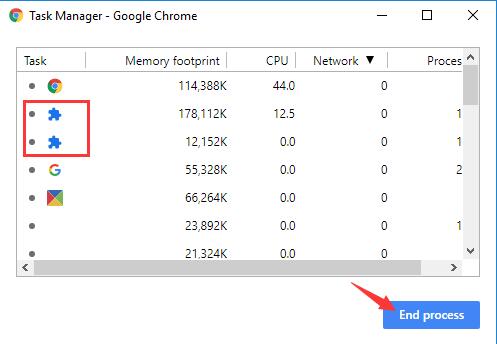
- #Google chrome not opening sfc install#
- #Google chrome not opening sfc update#
- #Google chrome not opening sfc windows 10#
- #Google chrome not opening sfc software#
- #Google chrome not opening sfc Pc#
I base that assumption in part on the fact that if you use the /online switch, there is no way to specify where the affected Windows folder is, so it uses C:\
#Google chrome not opening sfc Pc#
Is the ‘guest’ hard drive offline as far as DISM is concerned? In my head, the definition of ‘online’ is the Windows installation that is currently running (my own PC in this case) and ‘offline’ is everything else - but am I right?

Sfc offline scan says ‘Windows Resource Protection could not perform the requested operation’. I have removed the hard drive and stuck it in my PC.
#Google chrome not opening sfc install#
Where the OS partition had been assigned the letter C: and the 100MB FAT32 partition S:Īs a result of that, it now boots as far as a stopcode 0xc000021a, which could be due to corruption of WinLogon or Client Server-Run Time Subsystem (CSRSS) or of a driver, so I am trying to check the install for integrity. I have performed bootrec /fixmbr (which reports successful), bootrec /fixboot (which reports Access Denied) and bootrec /ScanOS which reports no Windows installations found, although the Windows partition and folder can be accessed just fine.
#Google chrome not opening sfc windows 10#
I have the harddrive from a computer that will not boot up but can get into the recovery environment (or I can boot off a Windows 10 installation memory stick). I am struggling to use DISM in any meaningful way, which is no doubt due to my lack of understanding - or misunderstandings.īackground of the current problem - though my questions are general:
#Google chrome not opening sfc software#
#Google chrome not opening sfc update#
Systems configured to use WSUS by default may be configured to use Windows Update instead for repair operations. You need to specify an alternate source, and may block use of Windows Update.Set the policy to enabled, and configure it accordingly.Double-click on Specify settings for optional component installation and component repair.Go to Computer Configuration > Administrative Templates > System.Note that it is only available in professional or Enterprise editions of Windows. Type gpedit.msc and hit the Enter-key to open the Group Policy Editor.Tap on the Windows-key to bring up the start menu.You can specify a different source using the Group Policy. To prevent the use of Windows Update:Â /LimitAccess as a parameter.To use a different repair source: Dism /Online /Cleanup-Image /RestoreHealth /Source:d:\test\mount\windows.To repair an offline image: Dism /Image:C:\offline /Cleanup-Image /RestoreHealth.If the scan finds corruption, it attempts to correct the issue using Windows Update by default. Note that the operation may appear stuck at times but this is no cause for concern as scanning should commence after a moment automatically. The scan takes longer to complete if corruption is found during the scan of the image. The /RestoreHealth parameter runs a scan for corruption and attempts to repair any issues that it finds automatically. DISM /Online /Cleanup-Image /RestoreHealth The scan takes longer to complete and the findings of the scan are returned in the command prompt window. The command scans for component store corruption but does not correct any issues. Previous operations may have flagged the image as corrupt. The scan should not take longer than a second or two.

Be sure to get care or call 911 if you have trouble breathing, or have any other emergency warning signs, or if you think it is an emergency.The command checks the image for the corruption flag and returns its findings to you but does not run repair operations. Call your doctor if your symptoms are severe or worsening. Take over-the-counter medicines, such as acetaminophen, to help you feel better. Most people with COVID-19 have mild illness and can recover at home without medical care.

Do not go to the emergency room unless you are experiencing a severe medical emergency.

Q: I tested positive, or I'm concerned that I have COVID-19 - what should I do?Ī: If you're sick, ASSUME it's COVID-19 - stay home except to get a test. Please DO NOT go to the emergency room or call ChristianaCare for a COVID test. Additionally, at-home COVID test kits may be available at retail pharmacies. To find out where you can get a COVID test, visit the State of Delaware website at de.gov/gettested or the State of Maryland at /testing. Q: I need a COVID-19 test - what do I do?Ī: The demand for tests at this time is extremely high. Cancer Care at ChristianaCare, Union Hospital.


 0 kommentar(er)
0 kommentar(er)
